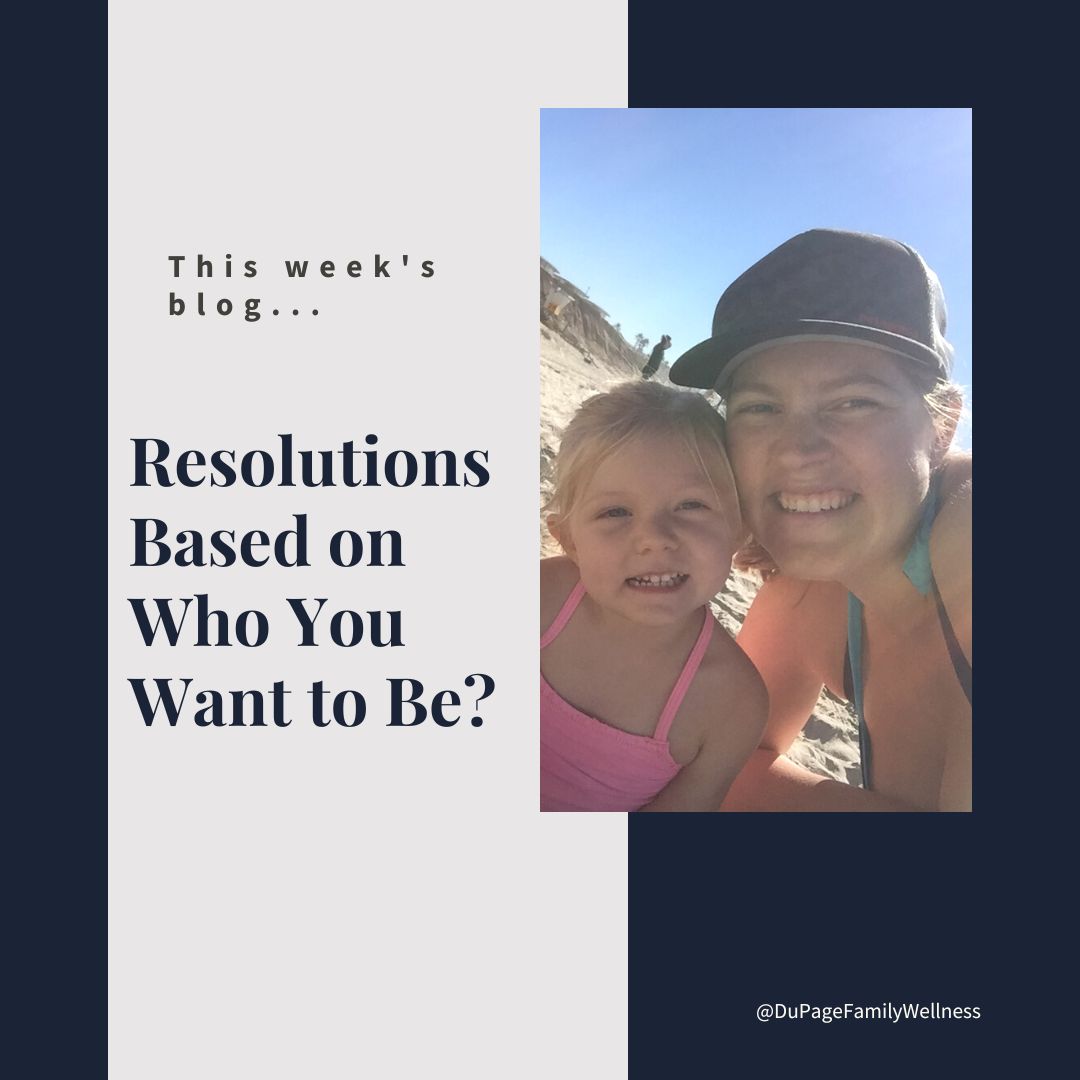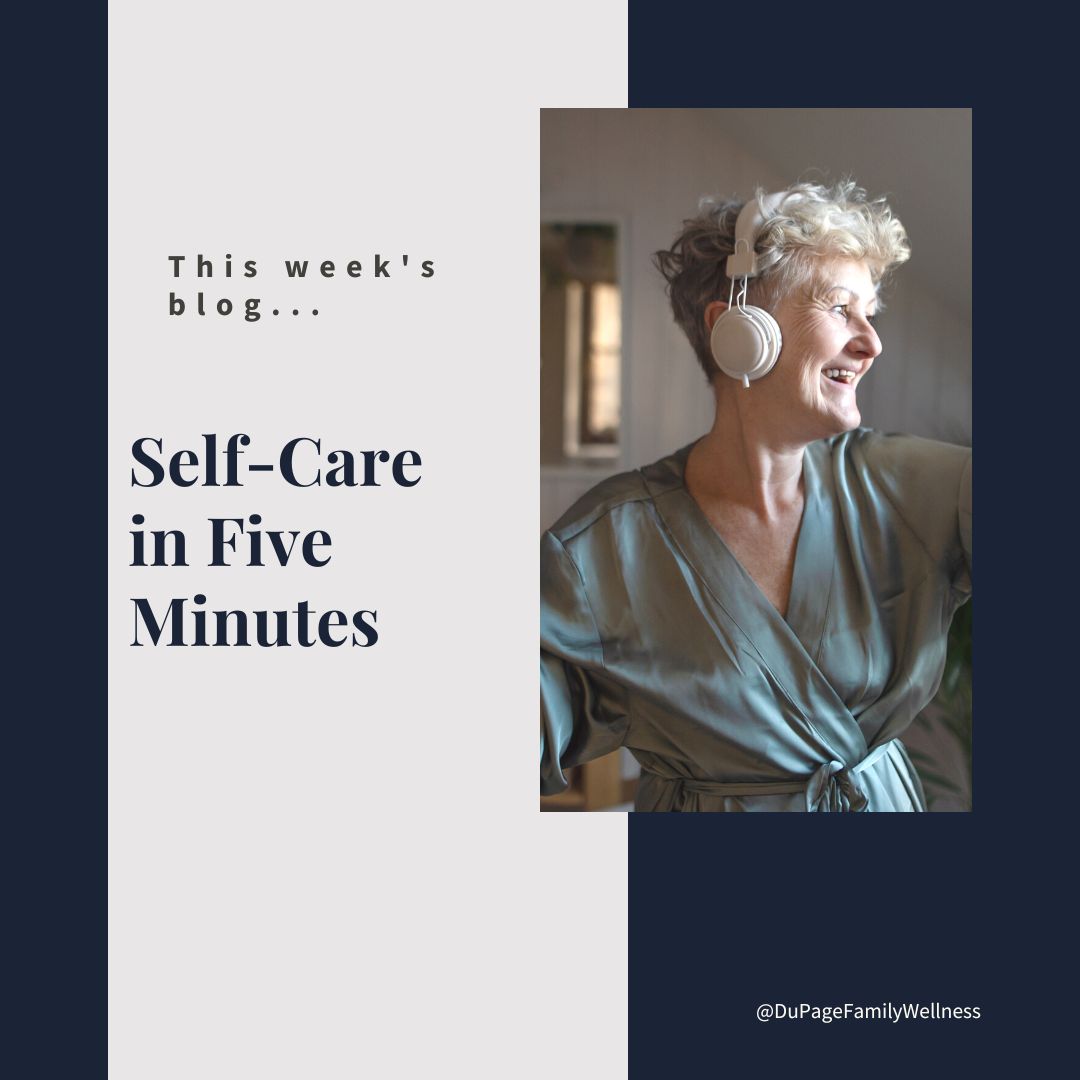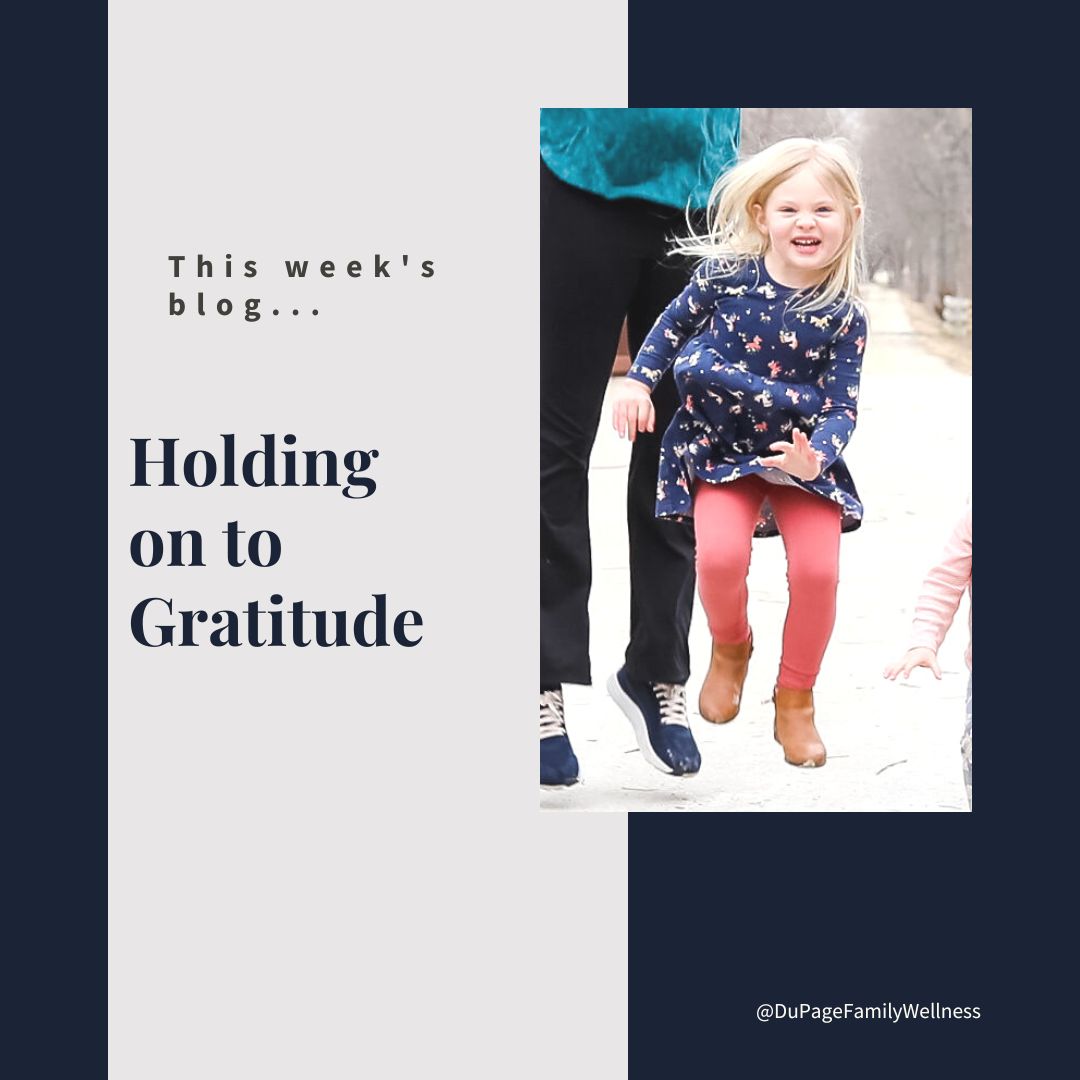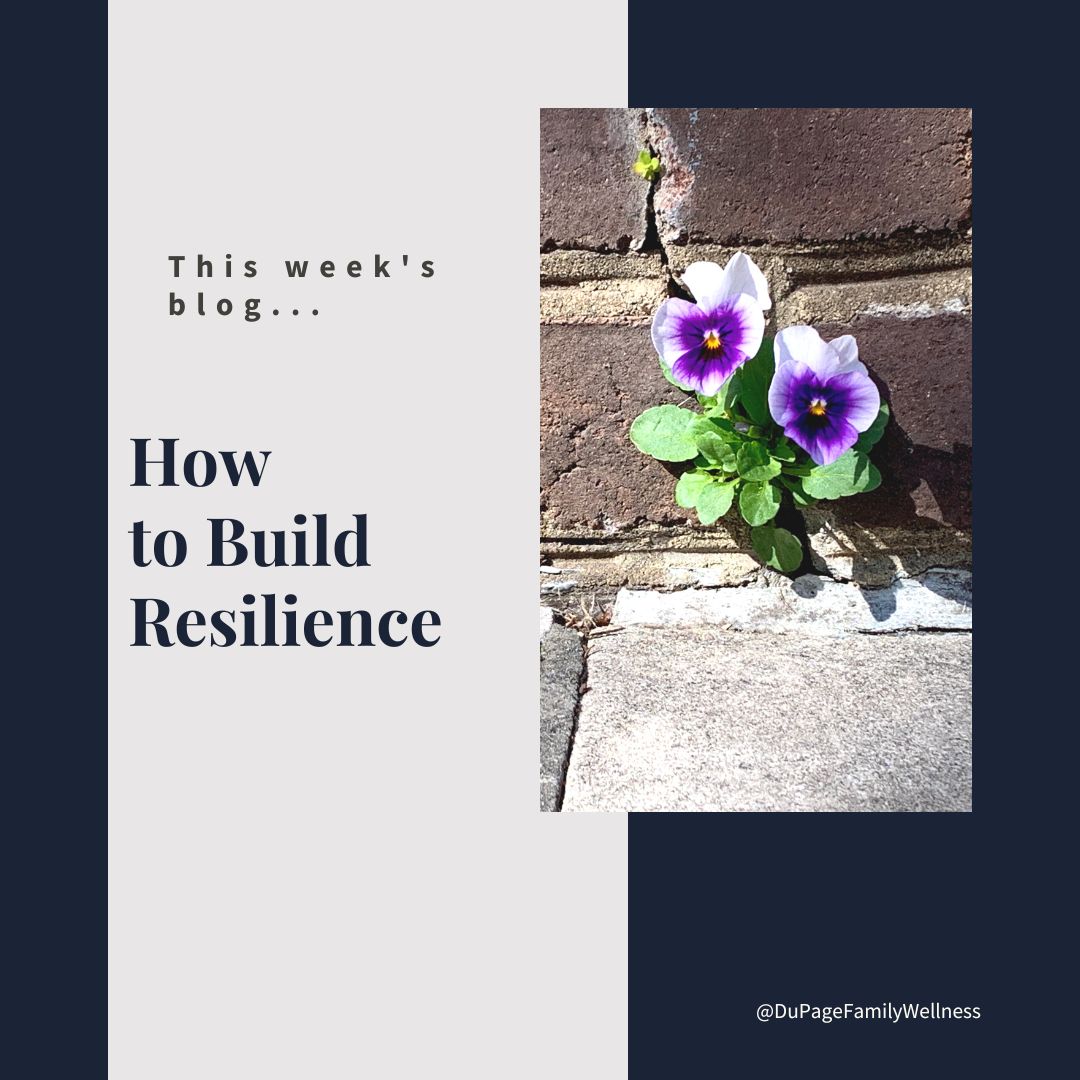 As we go into the new year, thirty percent of people make resolutions in hopes of changing for the better. Even those who don’t commit to specific change often find themselves reflecting on their life and clarifying their values.
As we go into the new year, thirty percent of people make resolutions in hopes of changing for the better. Even those who don’t commit to specific change often find themselves reflecting on their life and clarifying their values.
I want to introduce you to a concept that might make the process of change a little easier. It involves some soul-searching to find out who you want to be. Knowing this can help you see your next steps and motivate you in the process.
Let’s look at how to do that and then turn our attention to some tips for making traditional resolutions better.
Clarify Who You Want to Be
Before deciding on outward action take some time to think about who you want to be. Do this before you decide on specific resolutions or begin to make an action plan.
Do you want to be a…
- great parent
- successful entrepreneur
- good friend
- healthy vibrant person
- lighthearted individual
What do you see when you think about that person?
- what do they look like
- what are their facial expressions
- how do they perceive themself
- how do those close to them perceive them
What would the future you do if they were who you want them to be?
- how do they act
- how do they handle their finances
- how do they spend their time
- what do they eat
- what is their interaction like with their family
- do they take risks
- do they shy away from challenges
How Knowing This Helps
Finding out who you want to be will clarify “your why.” Knowing why you want to do something is as important as how you want to achieve it. Let’s look at some typical resolutions, breaking down what someone’s “why” might be. They may want to...
- eat healthy to feel more energized to pursue their career and become a successful businessperson
- save money to be able to travel and become an adventurous fun person when they retire
- reduce stress to be more present with their kids and be a great parent
- exercise more to set themselves up to stay active in their older years continuing to be a healthy vibrant person
How to Set Resolutions
Our lives five years from now will be a result of the culmination of tiny habits formed along the way. If you want to be a person in five years, you need to start acting like that person today.
If you are a resolution person, it’s time to make an action plan that will set you up to reach your goal. When we achieve a goal it creates a desire to keep going and often challenges us to make other positive changes.
So, when you set your goals…
- Be realistic - Look at your capacity (schedule, commitments, energy level, physical ability, etc.). As much as we hate to admit it, we are finite beings with limited capacity. Saying “yes” to one thing will mean saying “no” to something else. Make sure that your goal is worth saying “yes” to, and figure out what you will say “no” to in exchange.
- Be specific - John Norcross of the University of Scranton says, “if you can't measure it, it's not a very good resolution because vague goals beget vague resolutions." So, rather than deciding to "exercise more," you might want to say that you will take a walk three times a week during your lunch break.
Read more ...
 It’s twelve days until Christmas, so you probably don’t have a lot of time for self-care. You might not even have enough time to read this article. So, I’ll make this short for you!
It’s twelve days until Christmas, so you probably don’t have a lot of time for self-care. You might not even have enough time to read this article. So, I’ll make this short for you!
Let’s look at some things you can do to take care of yourself in 5-minutes or less.
- Put on a cozy sweater or sweatshirt
- Open the window for a cool breeze
- Massage or stroke your face
- Do some jumping jacks
- Meditate
- Smile (extra credit if you can make yourself laugh)
- Wrap one gift
- Dance
- Tell yourself or someone else a joke
- Gaze at the stars
- Yoga (hold the child’s pose)
- Take some deep breaths
- Stare at nature
- Declutter your nightstand
- Give yourself a foot massage
- Put on some makeup
- List three positive things about yourself
- Close your eyes letting the sunshine on your face
- Diffuse your favorite scent
- Play with your pet
- Make a list of everything on your mind
- Do a sudoku or crossword puzzle
- Hug a loved one
- Open your blinds
- Be completely still
- Listen to your favorite song
- Apply a face mask
- Sit in your car in silence
- Pick a mantra to focus on
- Step outside or go for a walk
- Sing your favorite song
- Mindfully drink your coffee
- Eat a piece of dark chocolate
- Stretch your body
- Progressively tense and relax your body
- Apply lotion to your body
- Doodle or color
- Look at old pictures
Remember, you deserve to enjoy your holiday. It’s more important to be present with your loved ones than it is to try to make everything perfect. So, please be kind to yourself this holiday season.
Dr. Jamie
 It’s been quite the week for store associates and holiday shoppers across the country. Black Friday and Cyber Monday are the busiest shopping days of the year, but what if the best gifts don’t come in a box?
It’s been quite the week for store associates and holiday shoppers across the country. Black Friday and Cyber Monday are the busiest shopping days of the year, but what if the best gifts don’t come in a box?
In our family, some of the most cherished gifts are things you can’t wrap under the tree. Most of us don’t need more material goods, so giving experiences can be a great way to express your love and make memories that last!
One of my favorite gifts from my parents was a family membership to the Naperville Children's Museum. We used the gift throughout the year and thought of them every time we went.
Let’s look at some ideas for experiences your loved ones may enjoy!
Children
Most children have over seventy toys but only play with about ten of them. That’s why experiences are so great. They will have the memory far longer than they will enjoy a toy. Think about getting them a/an…
- membership to the Zoo (Brookfield Zoo and Cosley Zoo are both great)
- gift card to the movie theater (with money for popcorn of course)
- membership to the DuPage Children's Museum
- kid's manicure/pedicure
- ride on the Metra (into the city or to Toot Toot’s restaurant in Glen Ellyn)
- horse riding lesson
- outing to a sporting event
- pass to Fox Bowl
- ticket to a children’s show
- series of swim lessons
Teenagers
Teens have outgrown most toys, but money feels so impersonal. A great solution is to give them an experience they would love! Perhaps they would like a/an…
- gift card to the movie theater (with money for snacks)
- manicure/pedicure
- ticket to a show at a local theater
- outing to a sporting event
- Spotify gift card
- craft class (pottery, macramé, etc.)
- horseback riding lesson
- music class
- escape room experience
Adults
Many of us have more things than we know what to do with. Organizing all of them can be overwhelming. That’s why experiences are so valuable. Some ideas for adults include a/an…
- ticket to a sporting event
- manicure/pedicure
- foot, back, or full-body massage
- ticket to a show at a local theater
- Spotify gift card
- store membership (Costo, Sam's Club, etc.)
- escape room experience
- ax throwing experience
- coupon for watching their kids
- coupon for making them dinner
- weekend away
- cooking class
- sip and paint night
- craft class (pottery, macramé, etc.)
- trip away through extra airline miles
- membership to the Morton Arboretum
Giving experiential gifts is meaningful and keeps things simple. I’d love to hear if you use any of these ideas or come up with others on your own!
Dr. Jamie
*As an Amazon Associate, I earn a small commission from qualifying purchases made through the links.
 This year the list of things my girls are thankful for includes mom, dad, sisters, friends, string cheese, cookies, candy, rainbows, and unicorns!
This year the list of things my girls are thankful for includes mom, dad, sisters, friends, string cheese, cookies, candy, rainbows, and unicorns!
Focusing on gratitude this season is lovely, but expressing genuine gratitude can be a healing practice all year round. So, let’s use this holiday to set the tone for the rest of the year by creating a gratitude practice.
A gratitude practice is different from having an "attitude of gratitude" or "looking on the bright side of things." It is more intentional than just being optimistic or thankful from time to time and requires a decision to set aside time for gratitude each day.
It’s a simple thing that will benefit your physical, psychological, and social well-being. Since it's free, does not take much time, and can be done in the privacy of your own home anyone can do it.
Let's explore some of these benefits and consider how to incorporate a gratitude practice into our lives.
The Benefits of Gratitude
Feeling gratitude is good for our brains activating the hypothalamus and flooding our brains with the feel-good hormone dopamine. Some studies have found it decreased the prominent stress hormone cortisol and blood pressure while increasing heart rate variability.
Robert Emmons, the world’s leading scientific expert on gratitude, found that people who consistently practice gratitude report many physical, psychological, and social benefits such as:
Physical
- Stronger immune systems
- Less bothered by aches and pains
- Lower blood pressure
- Exercise more
- Take better care of their health
- Sleep longer
- Feel more refreshed upon waking
Psychological
- Higher levels of positive emotions
- More alert, alive, and awake
- More joy and pleasure
- More optimism and happiness
Social
- More helpful, generous, and compassionate
- More forgiving
- More outgoing
- Feel less lonely and isolated
How to Cultivate a Gratitude Practice
A gratitude practice is simply forming habits that help you focus on something you are thankful for on a regular basis. It could be an object, person, or experience. You may be thankful for your health or a quality you see in yourself. Anything is fair game!
You must be genuine to get the benefits of this practice, so be completely honest with yourselves. More benefit will come from focusing on small things you are truly thankful for than from pretending you are grateful for larger things that you think you should be thankful for.
It’s important to keep your gratitude practice fresh. If you start to feel like you are doing your gratitude practice to check it off your to-do list, it may be time to try something new. With so many ways to explore gratitude, there is no reason to get stuck in a rut.
- Create a gratitude journal.
- Write thank you cards or letters of affirmation to people in your life.
- Think about qualities you are thankful for in yourself.
- Meditate on things you are grateful for each morning for 5 minutes.
- Help someone who doesn’t have all the advantages that you do.
- Find something to look forward to each week.
- Think about someone who has influenced your life and write them a letter.
- Pray to express thankfulness for the good things in your life.
- Write down one word that brings up feelings of gratitude and think about it throughout the day (hope, life, family, friends, health, etc.).
- Listen to a song you enjoy and take time to really appreciate it.
- Practice mindful eating to appreciate the gift of food.
- Check out 40 Simple Ways To Practice Gratitude for more ideas.
Read more ...
 Resilience is the capacity to recover quickly from difficulties. It is what allows you to bounce back from challenges. There is no way to prevent all hardship, but we can build resilience so when trouble comes we can recover in the best way possible.
Resilience is the capacity to recover quickly from difficulties. It is what allows you to bounce back from challenges. There is no way to prevent all hardship, but we can build resilience so when trouble comes we can recover in the best way possible.
We see this principle in nature all the time. In the animal kingdom, diversity keeps the different populations in check and protects our ecosystems. Rotating crops protects the soil from becoming depleted.
In order to build resilience, we need to establish diversity in our lives. It makes us more resilient physically and mentally. This helps our bodies heal more fully and makes us more capable of moving through trials in a healthy way.
Let’s explore some areas in our lives that would benefit from diversity.
Diversity in our Diets
We need to eat a variety of foods to ensure we get the right combination of vitamins, minerals, and phytonutrients. Even if you are eating healthy food you need diversity; it’s not enough to eat chicken and broccoli all day.
A diet consisting of an assortment of healthy food supports the different types of gut bacteria. It is necessary for each microbial species to be taken care of in order to have a balanced microbiome. Imbalances in the gut can lead to health problems throughout the body.
Step outside of your comfort zone and try to…
- eat the rainbow - have fruits and vegetables of every color throughout the week.
- eat a variety of protein - chicken, beef, eggs, fish, and shellfish.
- eat different parts of the animal - organ meat is the most nutritious part of the animal; liver is like nature's multivitamin.
- drink bone broth - it has a different amino profile than muscle meat and is incredibly nourishing to your gut lining, skin, hair, nails, and joints!
Diversity in our Movement
It is best to use a variety of full-body movements. Repetitive movements will make you prone to injury while limiting the mobility and strength that you would likely gain through more diversified movements.
Katy Bowman, the author of Move Your DNA, believes we need a variety of movements. She equates diversity in movement to getting movement "nutrients."
Step outside of your comfort zone and try to…
- go barefoot outside on irregular surfaces - those tiny foot bones will get some movement instead of being trapped in a shoe on flat grounds.
- get out in nature- hike off the beaten path or climb a hill.
- ditch the couch - sitting on the floor will engage your core.
- play like a child - incorporate movements you did as a child (running, chasing, climbing, or swinging).
- participate in sports - most sports will give you much more variety of movement than simply going for a run, a walk, or working out on an Elliptical.
- mix up exercise routines - some days lift heavy things focusing on body weight movements. Do mobility work on other days. Remember to use your whole body.
Listen to your body, and take breaks when necessary. Remember, movement doesn't just count when you are exercising. All your movement counts.
Diversity Emotionally
It is normal and natural to feel all different kinds of emotions. It shows that you are in touch with your inner world. People who aren’t able to feel a full spectrum of emotions are often stuffing their difficult ones. This can lead to depression, anxiety, resentment, as well as a host of physical problems.
Allowing a variety of emotions to be experienced can help you move through the difficult ones more effectively. This creates emotional resilience that you can’t get if you only allow yourself to feel “good” emotions.
Step outside of your comfort zone and try to…
Read more ...
 Many people believe that it is the beginning of the dreaded flu season! It is true that there are more cases of the flu diagnosed this time of year, but germs for the flu are around all year.
Many people believe that it is the beginning of the dreaded flu season! It is true that there are more cases of the flu diagnosed this time of year, but germs for the flu are around all year.
So, if these germs are always around, why do we see an increase in the number of flu cases during the fall and winter months? Could it be that the sugar and stress of the holidays impact our immune systems and leave us vulnerable to these illnesses?
Perhaps we should start calling it the “sugar and stress season!” As enjoyable as they are, the holidays lend themselves to both sugar and stress. Think about the Halloween candy, Thanksgiving pumpkin pie, and the sugar cookies on Christmas. Then add the stress of preparing for the holidays. No wonder our bodies are worn down.
Let’s take a look at this theory and explore ways to combat it this year.
The Condition of Your Soil
Dr. Angie Elliot uses a great analogy in her article, “There’s No Such Thing As ‘Flu Season’.” She talks about putting a seed in the ground without covering it in soil or giving it water, sun, and air. Would it survive? No way!
Elliot explains that “the soil (is) not ideal for the seed to take root and for the plant to flourish.” She encourages you to “consider your body equivalent to soil and a virus or bacteria as the seed. If you planted that seed in your body right now, could it grow?"
Many people get sick with colds or the flu this time of year because the condition of their body is primed for pathogens to thrive and grow.” When you look at it this way, it is easy to see things that impact your body's immune system and create an environment where germs can thrive.
What Impacts Your “Soil”
Some things that cause us stress in our bodies are obvious, while other things are more subtle. Often we are so used to these things that we don’t even realize that they are causing trouble.
This is the one day a year we are literally surrounded by candy. It is really hard to limit ourselves when we are handing it out all night and watching our children sort through their treasure. We will look at some tips for handling this in next week’s blog.
It's hard enough to get adequate sleep without the added responsibilities that come with making the holidays special. Planning events and buying gifts are enough to make us hate Pintrest and resent Martha Steward. Keep posted for some tips on buying gifts and planning menus as we get closer to the holidays.
Life can get overwhelming if we accept every invitation. Take time to consider your values. Use them as a guide to determine how to spend your time. Do you really want to go to three cookie exchanges? Can you go from one Thanksgiving dinner to the next without getting worn out? Now, more than ever, you will need boundaries.
Chicago gets pretty overcast this time of year, and the amount of time we spend outside may decrease quite a bit. These factors can affect our mood and vitamin D levels. Feel free to reach out if you’d like to discuss supplementation.
Holidays tend to be filled with sugary treats. You can often find them at the office and the holiday events you attend. It is hard to be social without the constant presence of sweets. Use some of the tricks we will talk about in our Halloween blog to handle other holidays.
In the busyness of the season, our workouts can be forgotten. Since we aren’t outdoors as much, we tend to be less active. And if you suffer from seasonal affective disorder, it can be really hard to be active.
Read more ...
 As we go into the new year, thirty percent of people make resolutions in hopes of changing for the better. Even those who don’t commit to specific change often find themselves reflecting on their life and clarifying their values.
As we go into the new year, thirty percent of people make resolutions in hopes of changing for the better. Even those who don’t commit to specific change often find themselves reflecting on their life and clarifying their values.

 It’s twelve days until Christmas, so you probably don’t have a lot of time for self-care. You might not even have enough time to read this article. So, I’ll make this short for you!
It’s twelve days until Christmas, so you probably don’t have a lot of time for self-care. You might not even have enough time to read this article. So, I’ll make this short for you! It’s been quite the week for store associates and holiday shoppers across the country. Black Friday and Cyber Monday are the busiest shopping days of the year, but what if the best gifts don’t come in a box?
It’s been quite the week for store associates and holiday shoppers across the country. Black Friday and Cyber Monday are the busiest shopping days of the year, but what if the best gifts don’t come in a box? This year the list of things my girls are thankful for includes mom, dad, sisters, friends, string cheese, cookies, candy, rainbows, and unicorns!
This year the list of things my girls are thankful for includes mom, dad, sisters, friends, string cheese, cookies, candy, rainbows, and unicorns! Resilience is the capacity to recover quickly from difficulties. It is what allows you to bounce back from challenges. There is no way to prevent all hardship, but we can build resilience so when trouble comes we can recover in the best way possible.
Resilience is the capacity to recover quickly from difficulties. It is what allows you to bounce back from challenges. There is no way to prevent all hardship, but we can build resilience so when trouble comes we can recover in the best way possible.  Many people believe that it is the beginning of the dreaded flu season! It is true that there are more cases of the flu diagnosed this time of year, but germs for the flu are around all year.
Many people believe that it is the beginning of the dreaded flu season! It is true that there are more cases of the flu diagnosed this time of year, but germs for the flu are around all year.